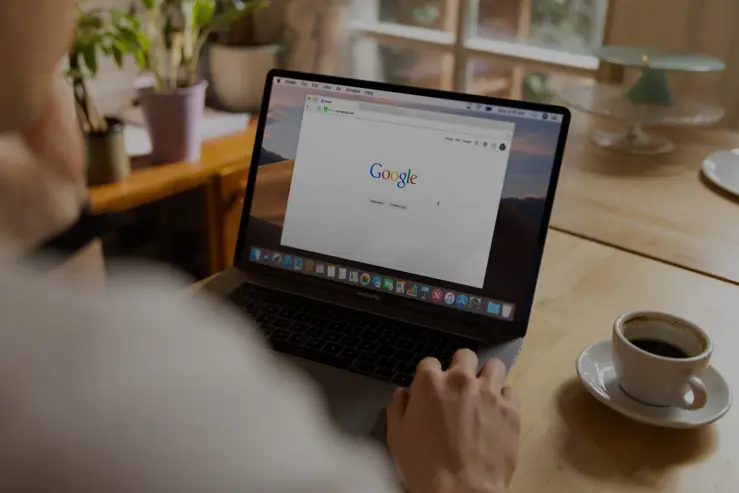Consumers, not brands are changing the internet
4 min read
Big tech might seem omnipotent - Google as the directory of our daily lives, Amazon the arbiter of all things we didn’t know we needed. Scratch the surface, however, and you’ll find consumers are far more powerful than they appear.
Look at how they bend apps and platforms to their will. Once, Google Maps only got them from A to B. Now it’s a place for recommendations and reviews of the locations it lists. People head to Snapchat Maps to find out where family and friends are hanging out, but it used to be there to stick pins in places where content was created.
The list goes on. Spotify just streamed tunes; today it’s a favourite app for exploring new artists. TikTok is evolving, too. Going beyond entertainment, the social media giant has become a go-to search and discovery tool to satisfy users’ curiosity.
Consumers, then, are as savvy as they are relentless. They will continue to hack apps and offer no mercy to those that don’t deliver what they crave. As a result, brands must understand and adapt to their shifting behaviour, and be ready to reshape and reset in short order.
The push and pull of online design
It’s said that necessity is the mother of invention. But curiosity can be innovation’s parent, too. Take the humble frisbee. Its original use was a handy pizza container. Someone, somewhere turned the idea – and the disc – on its head, and now it’s more commonly found flying through the air than lying on the picnic blanket covered in dough.
So it is with the internet. Its very fabric, and our daily use of it, has been shaped by people harnessing features in ways that tech companies did not originally intend. Did governments – or even Tim Berners-Lee – envisage in the eighties and nineties how an information-sharing network would eventually be used for good such as person-to-person communication, or ill such as illegal music and film-file sharing?
The rise of the likes of Limewire and Napster has necessitated change from music and movie publishers and distributors. They needed to evolve, to monetise their IP before someone else did. Hello iTunes. Hello Spotify.
It’s a prime example of the push and pull between businesses and humans that shapes the internet and stretches sites, apps and platforms beyond their original purpose as behaviours change. The online landscape has become the backdrop for a battle between the way consumers want to use things, and how organisations can monetise people’s preferences and habits.
This presents commercial opportunities for brands – but also plenty of challenges.
It’s okay to let the user lead
Being precious in response to user-led evolution of online services is not an option.
Few businesses ever succeeded by refusing to listen to customer feedback and adapting to more closely suit people’s needs. It might be a painful evolution to see their brainchild morph beyond its original state. But it’s also essential for survival when fast-moving rivals sense the wind shifting direction and act accordingly.
Let’s reopen Google Maps. It’s become one of the most useful apps around because it willingly adapted to user desire for a one-stop shop, not just for navigation, but also recommendation. If it had stood still, it’s a safe bet the app would have been overtaken by multiple map tools that could do the job in a more engaging and efficient way.
So, this is an obvious opportunity for brands to understand new behaviours and shape their values, products and services around trending consumer curiosity and activity; to find out how the platform is really being used and strike out for new horizons.
That means researching how audiences consume and hack the product - and there are some great examples. eBay may have originally set the bar for second-hand selling, but Vinted has gone one step further by gaining a deeper understanding of how people want to search for fashion. The success of the brand is that rather than copying eBay in the way they set themselves up (buying and selling secondhand goods), they’ve hacked the way fashion browsers use apps like ASOS.
Regardless of being new or second-hand, they see the category as ‘fashion’, and so have made a platform based on how users actually want to use it - looking at styles, sizes, occasions, colours - and not like eBay, which includes rough search terms, distance of the item and price-sorting.
Instinct matters more than science
Hacking is more of an art than a science when it comes to consumers’ use of the internet. It happens most frequently in highly visual sectors that engage the senses, such as fashion, music, food and drink. So, brands must use instinct as well as insight to capture a flavour of the trends going on in the world that they need to respond to.
To be successful, they must look outside the usual places where their consumer interactions happen. People’s exploration of brands today is a non-linear experience, so look at everywhere they can glean information from and all of the touchpoints they use to encounter, evaluate and eventually buy. Then, adapt and enrich the experience so they get what they came for.
As apps develop and digital technology continues to expand and become increasingly more fragmented and complex, don’t underestimate the importance of mapping brand interactions against changing customer needs for a smoother, more rewarding customer experience. After a while, humans will always find new ways to use ‘old’ things; internet as inspiration and innovation is just their modern method.
As published in Advertising Week.